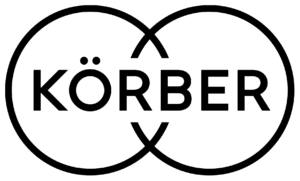[ad_1]
 Note: Today’s post is part of our “Editor’s Choice” series where we highlight recent posts published by our sponsors that provide supply chain insights and advice. Today’s article comes from Matt Boland at Koerber Supply Chain, and examines how technology can help improve on time in (OTIF) performance.
Note: Today’s post is part of our “Editor’s Choice” series where we highlight recent posts published by our sponsors that provide supply chain insights and advice. Today’s article comes from Matt Boland at Koerber Supply Chain, and examines how technology can help improve on time in (OTIF) performance.
In the supply chain, OTIF stands for “on time in full” and means delivering the correct goods in the right quantity to customers on the date promised. Adding this key performance indicator (KPI) to your supply chain allows businesses to measure themselves while being able to evaluate the performance of all the participants in the commerce ecosystem. Ultimately it allows the measurement of a business’ ability to deliver on their promise while capturing the highest gross margin on their inventory investment.
How to measure OTIF:
OTIF measurements pose challenges for organizations regardless of their type or industry. It is a crucial metric that reflects the supply chain’s contribution to the customer experience, impacting brands, wholesalers, retailers, manufacturers, and distributors, both online and offline.
While there is no single solution to measuring OTIF, it is often the result of multiple factors affecting the overall performance. Suppliers, inventory visibility, and other variables beyond direct control can influence OTIF.
By analyzing key performance indicators and identifying failures across various categories, businesses can understand the story behind their numbers. Failures generally fall into four categories: People, Process, Participant, and System, helping pinpoint areas for improvement.
There are several factors that lead to delays/discrepancies and ultimately failures in OTIF in a business. Those can include but are not limited to:
- Issues with inventory visibility,
- Linear order execution,
- Logistics updates,
- Exception handling,
- Supplier performance.
An underlying OTIF strategy is essential and it’s critical to consider all aspects of the business and its ecosystem when looking at the cause of issues and how to address them:
- Expectations with suppliers and 3rd party participants: Set clear expectations, improve communication and resolve any issues that are impacting OTIF. Establishing the same KPIs sets the goal but also works to “ferret-out” where the failures exist.
- Technology for real-time monitoring: Implement technology that delivers Specific, Measurable, Actionable, Realistic and Timebound (S.M.A.R.T.) results and provides regular reports to the relevant stakeholders. More importantly, this offers monitoring that signals exceptions that can be actioned upon in real-time, saving a potential failure.
- Inventory optimization: Understanding your global inventory positions is the #1 critical element to success in OTIF. You cannot promise with certainty without knowing your inventory availability and location in real-time with accuracy.
- Customer service-level agreements (SLAs): Communicate with customers, understand their needs and prioritize them. Make sure that your system (OMS) can model their SLAs and is executable therein.
- Continuous improvement: This comprises end-to-end visibility and systems to monitor and capture success and failure that improve OTIF performance. And lastly, it means to be able to quickly replicate success factors across the enterprise by regularly reviewing the progress and adjusting as needed. Meet frequently (quarterly) with all constituents to your supply chain initiatives, successes and failures.
An improvement of 5% in the OTIF rate for a company can have a significant impact on its operations and bottom line. Here are a few ways that an improvement of 5% in OTIF could benefit a company:
- Customer satisfaction and loyalty,
- Inventory cost, accessibility and utilization,
- Fulfillment, rates and exception handling,
- Supplier relationships and expectations.
How can an OMS help improve OTIF?
After measuring OTIF, businesses should analyze the tech tools capable of improving performance. An Order Management System (OMS) is a great example of software able to improve a company’s OTIF successes.
To read the full article, lick HERE.
[ad_2]
Source link













